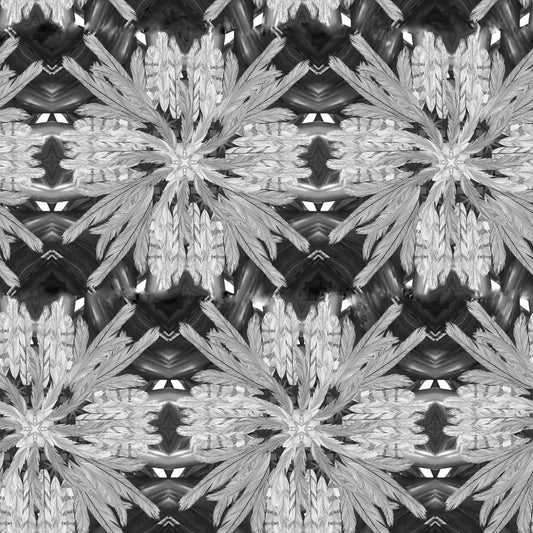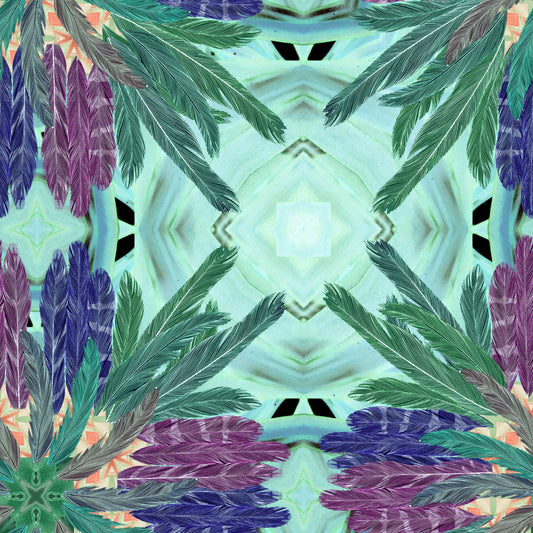How to Care for Printed Fabrics: Tips for Longevity
Maintaining the quality and colour of a print depends on proper care for printed fabrics, particularly if you wish the designs to withstand regular usage and washing. These are some helpful tips on keeping printed fabrics:
- Follow Instructions: Always refer to and follow the manufacturer's care directions on the fabric label. These offer, depending on the cloth and printing technique used, the best guidance on cleaning, drying, and ironing.
- Wash using cold water; washing printed goods in cold water helps stop shrinkage and fading. Faster breakdown of inks or dyes by hot water will result in less vibrant prints.
- Turning the fabric inside out before washing will help to preserve printed designs. This lowers direct detergent exposure and friction, so preventing fading over time.
- Use Mild Detergents: Strong detergents and bleach could ruin the print and fabric fibres. To maintain the fabric and the print quality, choose moderate, fabric-safe detergents.
- Steer clear of Fabric Softener: Residues left on the fabric from fabric softeners could compromise the print's finish. Rather, take natural softening substitutes like vinegar.
- Dry gently: Steer clear of high heat settings for drying printed goods. To prevent any possible shrinkage or fading, air-dry the cloth either hanging or flatly laying it. Select a low-heat or delicate setting if you are running a dryer.
- Iron carefully: Always iron printed clothes on the opposite side to avoid direct print contact. To guard the print from direct heat, set the heat low to medium and sandwich a cloth between the iron and the fabric.
- Organise Appropriately: Keep printed clothes away from direct sunshine. Sunlight can degrade colours by prolonged exposure. For clothing, use padded hangers; fold fabric carefully to prevent creases.
How does The Fabric PoD handle elements of fabric care?
With highly efficient custom printing, the Fabric PoD has transformed the fabric printing sector. They use cutting-edge digital printing technologies, including sublimation printing and direct-to-garment (DTG). Although the print is usually of higher quality, The Fabric PoD also takes fabric maintenance into account to guarantee client satisfaction. The Fabric PoD advances fabric care in the following ways:
- Printable Durability • Modern High-quality, environmentally friendly inks meant to last without cracking, peeling, or fading readily are used in techniques including DTG printing. This guarantees prints' colours even after several washings.
- More durable than surface-based prints, sublimation printing transfers ink straight onto fabric fibres using heat. The ink gets into the cloth; hence the print won't fade with time.
- Fabric Compatibility: The Fabric PoD presents a selection of materials meant for particular printing techniques. For instance, sublimation is more suited for polyester, whereas DTG printing performs best on cotton fabrics.
- High-Quality Inks: The Fabric PoD utilises inks developed for fabric, generally more resistant to fading, abrasion, and washing. This guarantees the print sticks properly and stays intact by providing the appropriate fabric alternatives for every print technique. Usually consisting of water-based, environmentally friendly formulations without sacrificing the feel of the cloth or the quality of the print.
- Customising for Optimal Care: The Fabric PoD offers guidance on how best to treat printed fabrics. They provide thorough directions catered to the particular ink and cloth type used, so enabling consumers to preserve the lifetime of their prints. This frequently covers tips on ironing, drying, and cleaning.
- Quality Control: To guarantee that the prints are high-quality and durable, the Fabric PoD usually features strict quality control systems in place. Testing fabric and print combinations will enable them to assist in reducing problems such as distortion over time.
- Sustainability Issues: The Fabric PoD is moving towards greener methods. This covers employing eco-friendly inks, printing just what is ordered to cut waste, and providing fabric choices that are certified organic or recycled. These methods preserve print quality while nevertheless helping to promote a more ecologically friendly method of cloth printing.
- Low Impact on Fabric Integrity: Usually, The Fabric PoD techniques have little effect on the fabric's integrity directly. Print-on-demand processes, such as DTG printing, guarantee the fabric stays soft, flexible, and durable after printing, unlike conventional methods, including screen printing, which can call for strong chemicals or high-pressure techniques.
Maintaining the lifetime of the prints depends on careful treatment of printed fabrics. Fabric prints' lifetime can be much increased with correct washing, drying, and storage. Regarding The Fabric PoD, the technology has developed to provide premium, long-lasting prints resistant to wear and tear by means of quality inks and textiles meant to manage the printing process. These factors let The Fabric PoD enable their customers to experience custom-printed materials with no maintenance concerns.












